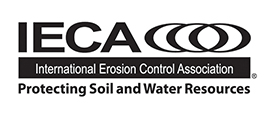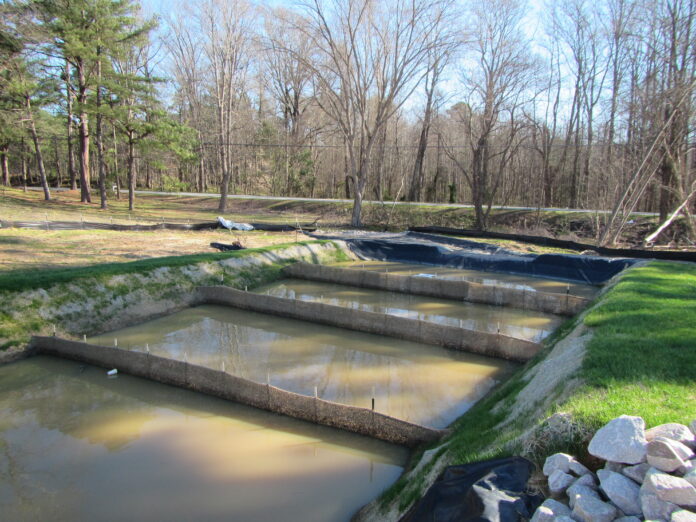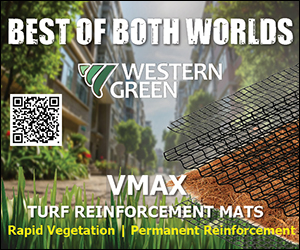The International Erosion Control Association (IECA) Standards and Practices Committee has been creating new standards for the erosion control industry. The Committee works to develop, refine and disseminate best management practices (BMPs) for mitigating environmental impacts from construction. These standards serve as a foundation for professionals tasked with balancing the demands of infrastructure development with the duty to comply with environmental regulations. The Committee uses modeling and research to guide the way erosion control is approached to ensure standards follow BMPs. The standards are comprehensive and address everything from technical specifications to inspection and maintenance, and they aim to empower stakeholders across the industry to adopt solutions that are practical and sustainable. This commitment has made the Committee a resource in the field of erosion and sediment control. For more information
about the Committee, go to ieca.org/sp.
Progress and Development
- Erosion and Sediment Control Terminology Standardization
To streamline communication across the industry, the Committee has developed a comprehensive glossary of erosion and sediment-control terminology. Key terms include:
- BMPs – Defined as a collection of measures to effectively mitigate erosion and manage sedimentation.
- Forebay – Described as an impoundment intended to slow down water and facilitate sedimentation when placed upstream of detention based practices.
- Hydraulic Growth Medium – Clarified by hydraulically applied media that promote vegetation when topsoil is absent or deficient.
It is a useful resource, especially for those newer to the erosion and sediment control industry, to look up terms that are not familiar. This glossary standardizes language, which promotes consistency and understanding among professionals.
2. Temporary Sediment Basin Standard
Temporary sediment basins are essential for capturing sediment-laden runoff on construction sites before water discharge. The new standard introduces:
- Optimal Design – Updated specifications on basin size, geometry and detention times to maximize sediment-capture efficiency. Best practices include incorporating multiple porous baffles to dissipate energy and enhance sedimentation (Cover photo).
- Innovative Dewatering Techniques – The inclusion of surface skimmers ensures sediment remains undisturbed while water is discharged. This improves the efficiency of sediment basins.
- Maintenance Guidance – Regular inspection and sediment removal protocols prolong basin lifespans.
A design guide is included with the standard to demonstrate how to size the temporary sediment basin based on runoff quantity from the design storm. This detailed guide gives practitioners the tools they need to design temporary sediment basins.

3. Construction Exit Pad Standard
Construction exit pads are designed to minimize soil track-out and debris from construction vehicles (Figure 1). Recent updates to the standard emphasize material specifications and improved design to accommodate varying site conditions. For example:
- Length and Width – The Committee highlighted the need for customization based on site-specific vehicle traffic and soil conditions. Exit pads should be designed to accommodate narrow and wide access points, which ensures flexibility for different projects.
- Geotextile Underlays – To improve durability, the standards recommend integration of nonwoven geotextile underlays beneath aggregate pads.
- Traffic Control Features – Updated guidance includes measures such as flaring exit pad ends and the incorporation of a turning radius for safe vehicle movement while minimizing soil disturbance.
These enhancements aim to extend the lifespan of construction exit pads and improve their efficiency, particularly in high-traffic construction sites.
4. Sediment Filter Bag Standard
Sediment filter bags are a critical component of dewatering systems, as they filter stormwater runoff and capture coarse particles. Recent advancements focus on:
- Material Resilience – Nonwoven geotextiles are now standard due to their improved filter capacity and durability. The Committee also recommends materials resistant to ultraviolet (UV) rays to withstand prolonged exposure.
- Strategic Placement – Emphasizing level ground installation promotes good functionality and minimizes risks of water bypass. Also, anchoring methods like stakes or sandbags enhance stability.
- Inspection Protocols – Guidelines recommend frequent inspection and timely replacement of sediment filter bags to prevent clogging and maintain efficacy.
These updates improve the reliability of sediment filter bags across various site conditions.
Ongoing Initiatives
As the Committee continues its mission, the focus has expanded to developing standards for floating turbidity curtains and hydromulch applications. These standards are expected to be completed in 2025.
- Floating Turbidity Curtain Standard
Floating turbidity curtains are used for controlling sediment in aquatic environments. These curtains are designed to isolate sediment-laden water, which allows particles to settle in an enclosed area. The Committee’s upcoming standard will address key aspects:
- Design and Materials – Curtains are crafted from durable geotextile fabrics reinforced with ballast chains and flotation units. The standard will emphasize materials capable of withstanding UV exposure and hydraulic forces.
- Effective Placement – Guidelines will consider different configurations, such as U shape, to isolate areas without obstructing the full channel width and account for flow velocity and tidal variations.
2. Hydromulch Standard
Hydromulching, a practice involving the application of a slurry of water, mulch and seed, is a key method for stabilizing soil and promoting vegetation growth. Planned standards will provide:
- Composition Recommendations – Guidance on selecting appropriate mulch types and additives based on climate and soil conditions.
- Application Techniques – Best practices for even distribution and adherence to soil.
- Rates – Adjusting rates based on the site-specific conditions such as percent slope, slope length, soil type, aspect and expected longevity.
Closing Thoughts
The Committee remains dedicated to advancing erosion and sediment control measures. The Committee is working to
ensure professionals have access to design standards made with current BMPs. The Committee’s efforts are making a lasting difference in the industry by developing design standards that can be used in a multitude of environments. As the Committee continues to develop and refine its standards, the Committee members hope more professionals will incorporate IECA design standards into their projects. For more information about the Committee, check out the website at ieca.org/sp. There, you’ll find all the standards and the glossary (Figure 2).

About the Expert
Christina N. Kranz, Ph.D., is a Lecturer and Research Associate at North Carolina State University.







